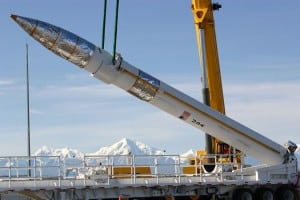Alaska’s Only Nuclear Plant Will Be Decommissioned
It’s been nearly 50 years since Alaska’s only nuclear power plant was in service. Nonetheless, the site has continued to be a hub of activity off and on over the years; the steam plant that was served by the nuclear reactor remains online, today powered by diesel. And since 2003, the facility has been home to most of the U.S. ground-based midcourse missile interceptors, standing guard against intercontinental ballistic missiles.
The U.S. Army Corp of Engineers recently unveiled its plan to formally decommission the plant, known as Fort Greely SM-1A (Figure 1), which provided electricity and steam to the Army post near Delta Junction for periods from 1962 to 1972. At the time it was one of eight experimental projects designed to test the viability of small nuclear reactors in remote locations.
The decommissioning will not come any time soon. The project’s timeline calls for requests for proposals over the next few years, with a contract awarded in 2022. The cleanup at the site is expected to take about five years after the deal is signed.

Chris Gardner, a spokesman for the Army Corps’ Baltimore District, which will oversee the decommissioning, told the Fairbanks Daily News-Miner: “As we go through the planning process and ultimately through implementation, safety of the workers is a number one priority. There will be a lot of coordination that will need to take place to minimize any impacts to the continued regular operation of the steam plant.”
The Army placed the nuclear plant into a safe storage status in 1972. Its uranium fuel and nuclear waste were shipped out of Alaska and the radioactive parts of the reactor were encased in concrete. The Army thought any remaining radioactive waste would decay to a nonradioactive state. The base continued to operate but was ordered closed in 1995 as part of the congressionally mandated reorganization of the nation’s Army bases, before being re-opened in 2003 for missile defense.
Studies showed the radioactive waste left at the site was not decreasing as expected, so the Army decided a formal decommissioning was needed. The Army has not estimated the cost of the cleanup, though reports said similar projects have been budgeted at more than $66 million.
The SM-1A nuclear plant at Fort Greely—which is about 100 miles southeast of Fairbanks and 225 miles northeast of Anchorage—was built from 1958 to 1962, based on the SM-1 reactor at the base in Fort Belvoir, Virginia, which was a prototype for stationary medium-power (SM) plants. The 1A designated the unit as the first field plant of its type. The Army wanted a test facility for the equipment in an arctic environment, which in this case would supply electricity and heat for Fort Greely. The Army also wanted “to study the economics of operating a nuclear-type electrical plant compared to conventional oil-fired systems in a remote area where fuel costs are high and supply lines unusually long.”
The SM-1A, a 20.2-MW pressurized water reactor, could supply 72,000 pounds of saturated steam per hour. It used uranium oxide highly enriched in U-235 as fuel. The Army said high operating costs, and the projected cost of replacing the reactor pressure vessel, led to the decision to close the plant by 1968. But an annealing process was used to extend the vessel’s lifecycle, keeping it operational until March 1972.

Fort Greely today is considered the nation’s first line of defense against a missile attack (Figure 2). Soldiers from the 49th Missile Defense Battalion use sea-, land-, and space-based sensors to spot a launch from anywhere in the world. If a launch were detected and considered to be an attack, the 100th Missile Defense Brigade in Colorado Springs, Colorado, would relay permission for the battalion to fire.
—Darrell Proctor is a POWER associate editor (@DarrellProctor1, @POWERmagazine)